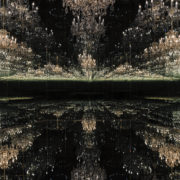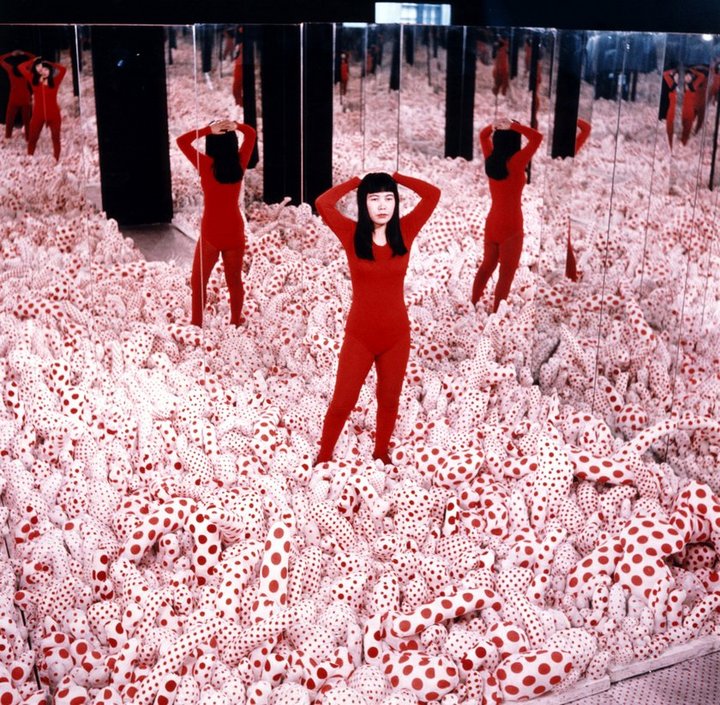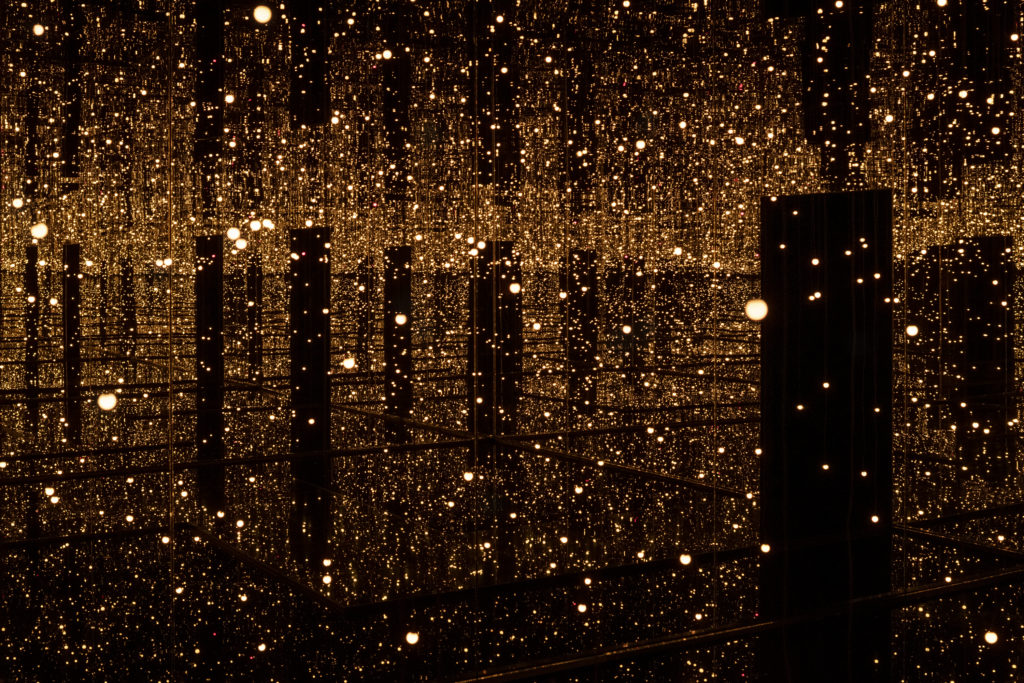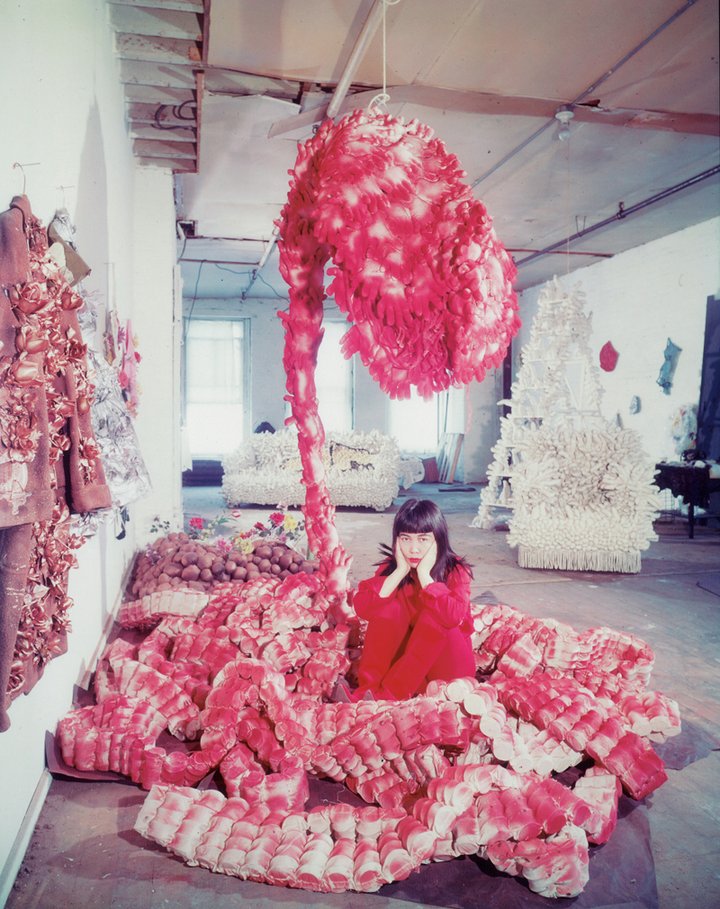In this space, Yayoi Kusama’s art became real-life therapy, a saving grace, for a feeling that many people have not survived.

A visit to the Tate’s Yayoi Kusama exhibition prompts the question ‘When will society take creative/art therapy more seriously?’
Throughout history, artists and creatives have existed between the earthly and spiritual realm, communicating moods, feelings, and experiences that deeply penetrate us beyond reasonable perception. Art is a matter of feeling and many of the greats are in fact philosophers who have completely surrendered to the mission of wearing one’s heart on their sleeves. In many ways, artists are that special class of people who exist as living embodiments of both the glorious and horrifying encounters of the human soul. For this reason, we also find that many creative artists are born with or experience a range of mental health differences that are simultaneously the cause of their success, AND their social isolation, feelings of being misunderstood, and/or untimely death. After visiting the current Yayoi Kusama ‘Infinity Mirrors’ exhibition at the Tate Modern I spent time reflecting on the power and importance of the creative arts in mental health.

Before the viewing, I didn’t know much about Kusama’s background as an artist, nor did I anticipate being so overwhelmingly moved by the depth of her human journey and encounters. Thanks to the array of photographs, film footage, and first-hand quotes, the exhibition paints a holistic introduction into the artist’s upbringing – born in rural Japan to a conservative family during the economic crisis. A childhood layered by trauma, Kusama began having vivid hallucinations as a child, recalling experiences of the world around her being immersed in colourful patterns that would eventually overcome and swallow her whole. As a way to purge herself of these visions, Kusama turned to the arts as her saviour.
Yayoi writes “Forget yourself. Become one with eternity. Become part of your environment.”
These words weren’t just some new-age spiritual rhetoric, but in fact, depict the environment of her mind overcome by feelings of ‘self-obliteration’, which is a desire to exist freely beyond physical limitations. For Kusama, these limitations were years of pain and discouragement from her family, the Second World War, and the suffocating rigidity of society around her. When I accepted the exhibition invitation I expected only to enjoy the visual stimulation of the beautifully intricate and colourful installations. However, reading Kusama’s story I was instantly transported back in time to when I was 18, whilst on a get-away, gap year trip to India. I remember being on the edge of a mountain, looking over the valleys into the infinite distance and feeling a profound urge to jump. The feeling was so profound I could feel my body pulling me forward over the edge to the point of tears… Now, this feeling wasn’t one with suicidal intent, in fact, I was crying so much because I knew that death would be inevitable if I did indeed jump. This urge was as Kusama describes it, “a desire to self obliterate”, an inexplicable desire to connect and become one with the ‘moment’ before me. Kusama’s piece ‘Chandelier of Grief” captures the feeling perfectly – the simultaneous experience of intense sadness amidst the appreciation of profound beauty.

Throughout the exhibition, there were several references to the feeling of ‘letting go’ and becoming one with the world around you. In her Infinity Mirrored Room ‘Filled with the Brilliance of Life,’ Yayoi offers the opportunity to both exist and completely dissolve between heaven and earth. Whilst being in that room, I felt that same desire to jump and let go. However, the star-like lights that completely surrounded me, above and below, allowed me to exist in some kind of limbo. I was finally able to experience both the anticipation of wanting to jump and the contentment of feeling like I already had. At this moment, in this space, art became real-life therapy, a saving grace, for a feeling that many people have not survived.
This very brief introduction into Yayoi’s life journey and work was all that I needed to deeply reflect on the damaging ways that modern society perceives and approaches mental health. Over the years of working in the creative industry I’ve come across many beautiful humans that have been forced to take a step away from their work and authentic selves due to struggles with their mental health in various capacities.
Similarly, coming from a nursing background, I can also vividly remember my placements on the mental health wards where a combination of under-stimulation and the dulling effects of medications created an atmosphere of stagnation and repression. Seeing Yayoi’s work made me consider how stigmatised perceptions and non-holistic approaches to mental health and neural-divergence have essentially severed us and the wider society from the rich kaleidoscope of this living experience.
Kusama writes “I, Kusama, have opened up a world of fantasy and freedom”.

Yayoi’s installations are not only pieces of art, but instead an opportunity to step into the alternate realities and dream state realms that only she can see. At this moment, I wonder how many more portals of existence are trapped inside the minds of those struggling with mental health and how creative/art therapy could be better utilised to help them navigate and safely exist within their experiences. Yayoi’s hallucinations persisted throughout her adult life, art was her way of better understanding and communicating her experiences. In 1977 she admitted herself into hospital, where she continues to write and paint, even now at the ripe age of 92. While some people may consider this to be a sad ending, again I point us to the stereotypes and stigmas that we attach to the extra support potentially needed by those living with mental health differences. For me, Yayoi’s decision to permanently reside within her own curated safe space is an honourable one that speaks not only to the height of her awareness and self-advocacy but also to the readily available provision of resources, that many people do not have the privilege to access.
“It would be futile and meaningless to focus on the shrinking time-frame before me or to think of my limitations. I shall never stop striving to make works that will shine on after my death”
EXCLUSIVE:
The tickets for Kusama almost always sell out instantly and so make sure you’re ready for the next batch of tickets to go on sale on 28 September at 12.00 for members and 30 September for general release. For anyone aged 16-15 you can easily become a member by joining the Tate Collective membership for free AND get the tickets at the discounted price of £5. Sign up here: https://www.tate.org.uk/tate-collective




![ZINO VINCI’S ‘FILTHY & DISGUSTING’EP BRINGS YOU TO THE CORE OF THE ARTIST [@ZinoVinci]](https://guap.co/wp-content/uploads/2023/10/Zino-4.jpg)





![Remel London’s [@Remel_London] “Mainstream” is a must attend for upcoming presenters!](https://guap.co/wp-content/uploads/2017/02/REMEL-LONDON-FLYER-FINAL-YELLOW-COMPLETE-1.png)